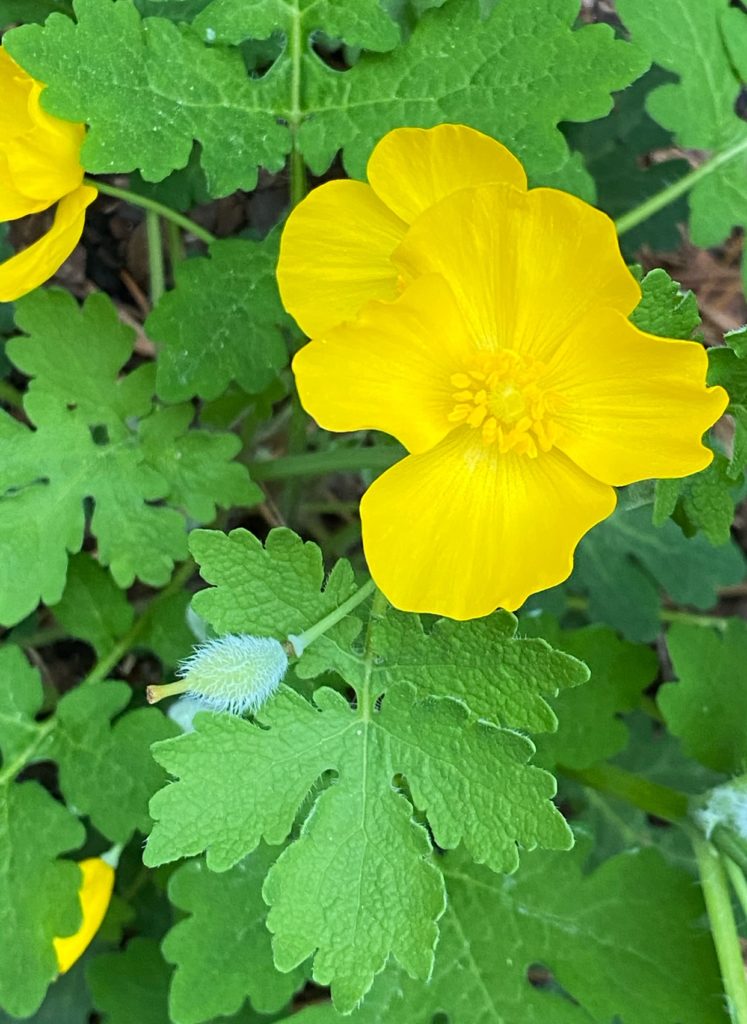
Most people would feel disappointment once they realize that part of their yard is a mud pit after a rainstorm. Not me. I like a challenge. After living in my new home for a year or so, I noticed that part of an unplanted border was consistently damp. Rain would puddle in this area and sit, sometimes for a few hours, or days, if we had a rainy week. A french drain seemed an overcomplicated solution for this particular area, so I decided to ignore it. I focused on other more visible parts of my garden for the next few years, planting only one shrub in this corner, a pale pink rose of sharon (Hibiscus syriacus). That summer I returned from a long trip to find the shrub, in full bloom, leaning precariously toward the ground after a heavy rain. The roots simply could not hold on in the mud puddle disguised as a planting bed. It took a few months for “rose” to find her foothold, but with a little staking she did straighten herself, more or less. Today her slighty off-kilter stance is a reminder that perfection is indeed overrated.
After the rose of sharon drama, I didn’t have much of a plan in mind for this small corner, but last fall, after seeing some pink chelone (or turtlehead as it is often called) on clearance at the garden center, I decided that it was time to complete this small corner of my garden. I’m glad I did. The grouping of pink chelones bloom from late summer into fall, and the creeping jenny planted at their feet creates a puddles of bright yellow-green, which look striking against the bright pink blooms. Lovely.

It is surprising how many plants thrive in soggy conditions. The trick is knowing which plants will work best with your light conditions and planting zone. I garden in USDA planting zone 7B. Here in the South, there are many perennials that will grow in damp soil, among them, daylilies, creeping jenny, bee balms, flag irises, asters, astilbes, toad lilies, and lady ferns. Virginia sweetspires, summersweets, and anises are a few of the flowering shrubs that can be used along with perennials if you want more height in your arrangement. Before you purchase plants, be sure you are matching up plants with your light conditions, whether you have all day sun, morning sun/afternoon shade, dappled shade, or full shade. Once you have plants in mind, there’s another step you won’t want to skip.
The Prep is Worth It
If you have sticky clay, it’s a good idea to wait until you’ve had a dry spell, so that soil is workable, and add a few inches of good compost, working it in well. This will help your plants settle in and thrive. (If you can find it, a soil amendment such as Perma-till or Soil Mender, would also help to improve the structure of your soil.) No further amendments are necessary once you’ve done this soil prep, other than topdressing annually with compost as you might do for other garden areas.

What Goes with What
Here are some simple combinations of perennials, groundcovers, and a few shrubs to try in a garden area with damp soil:
Blue flag irises + creeping jenny
Lady ferns + toad lilies
New England asters + pink turtleheads
Daylilies + pentas
Summersweets (clethra) + bee balm
Sweet flag + creeping jenny
Virginia sweetspires + false spireas (astilbe)
Blue cardinal flowers (Lobelia siphilitica) + greater celadine